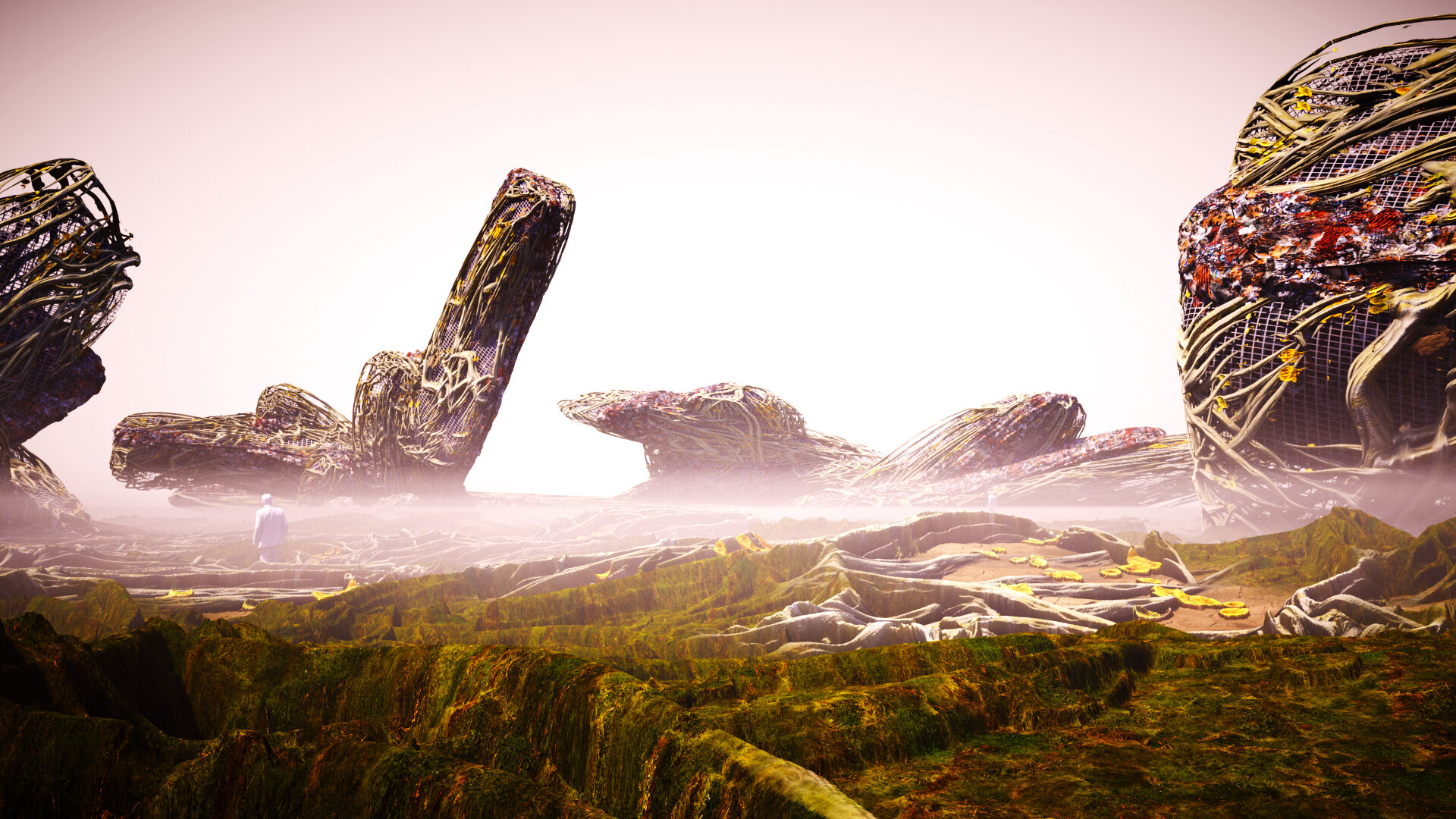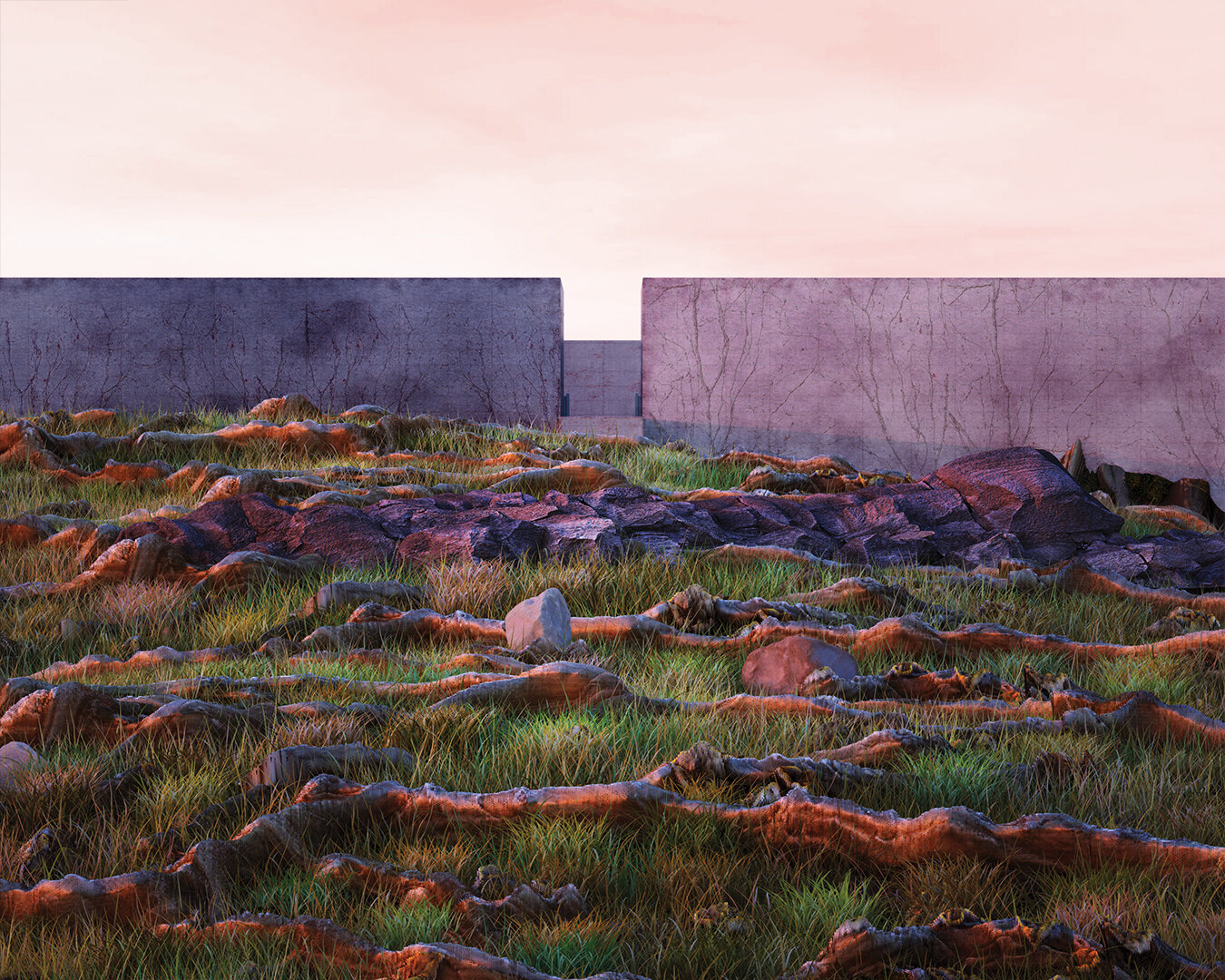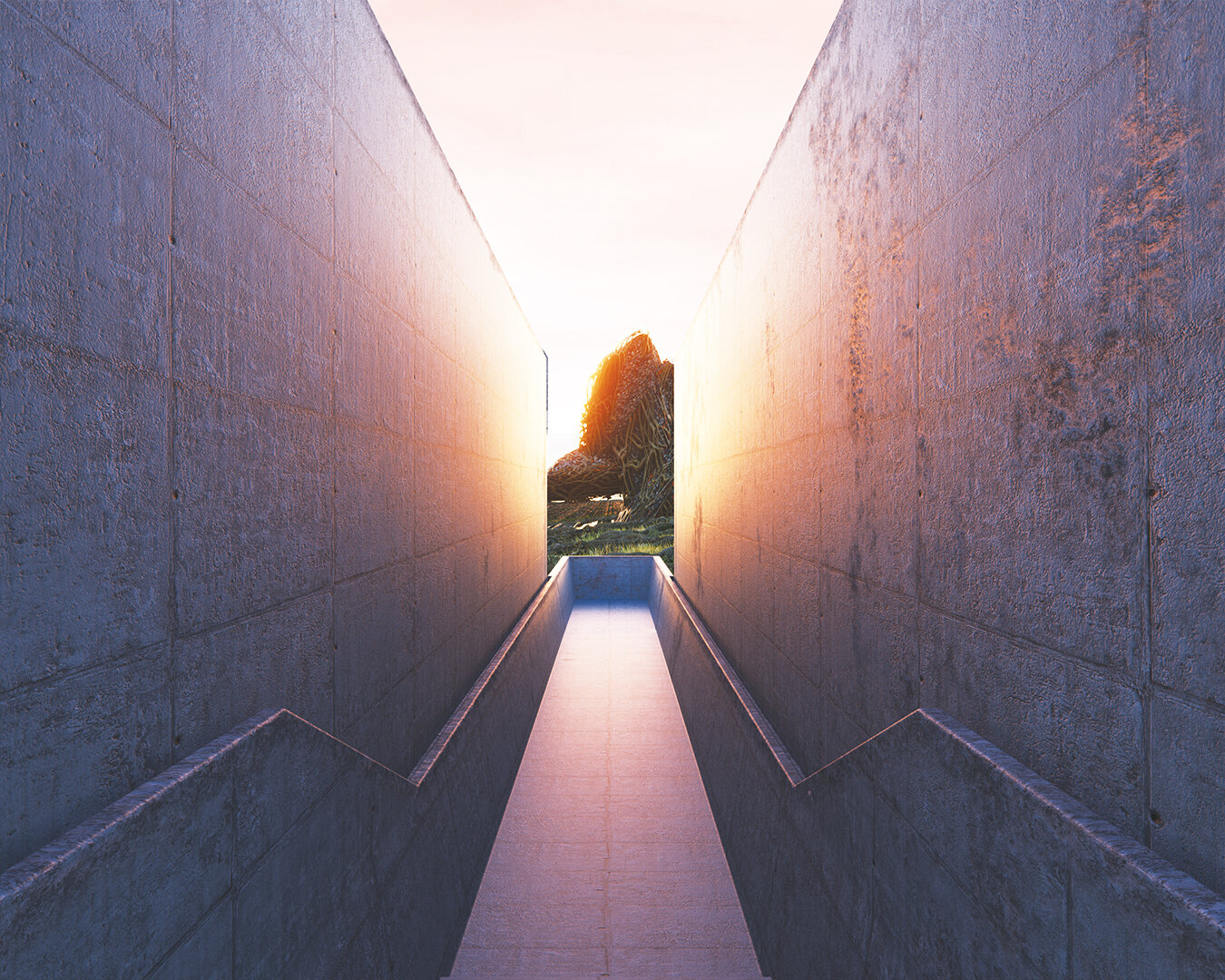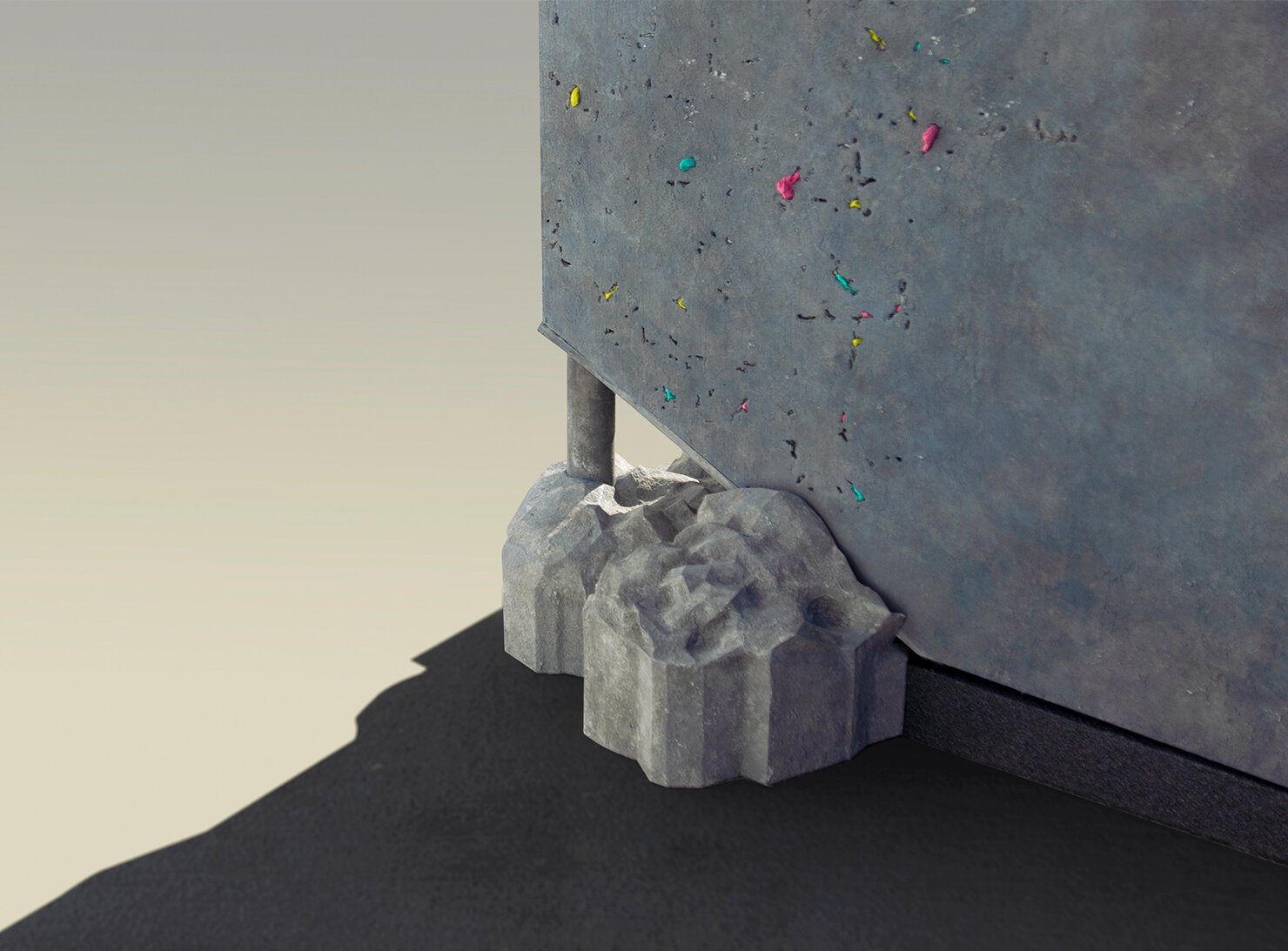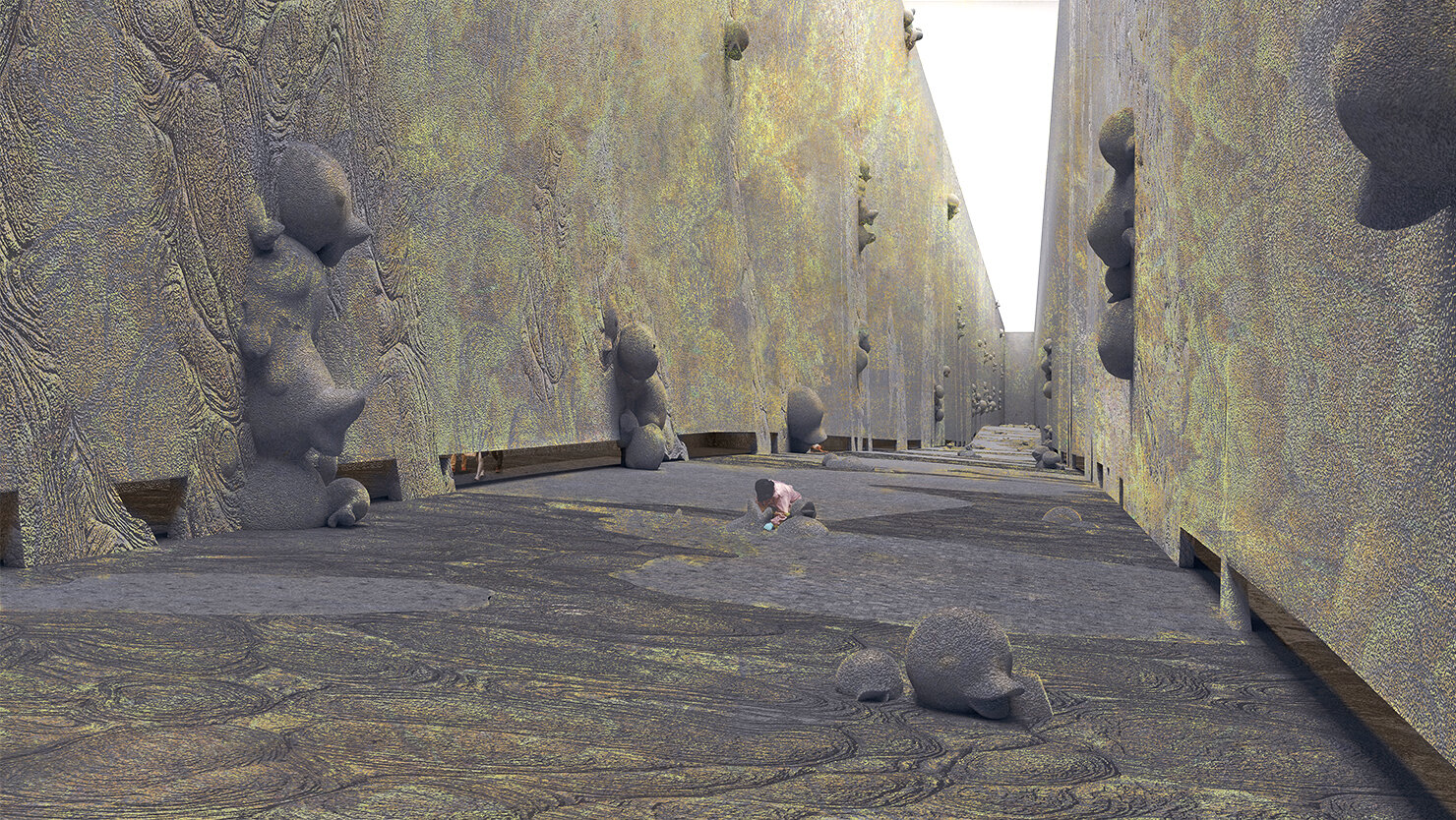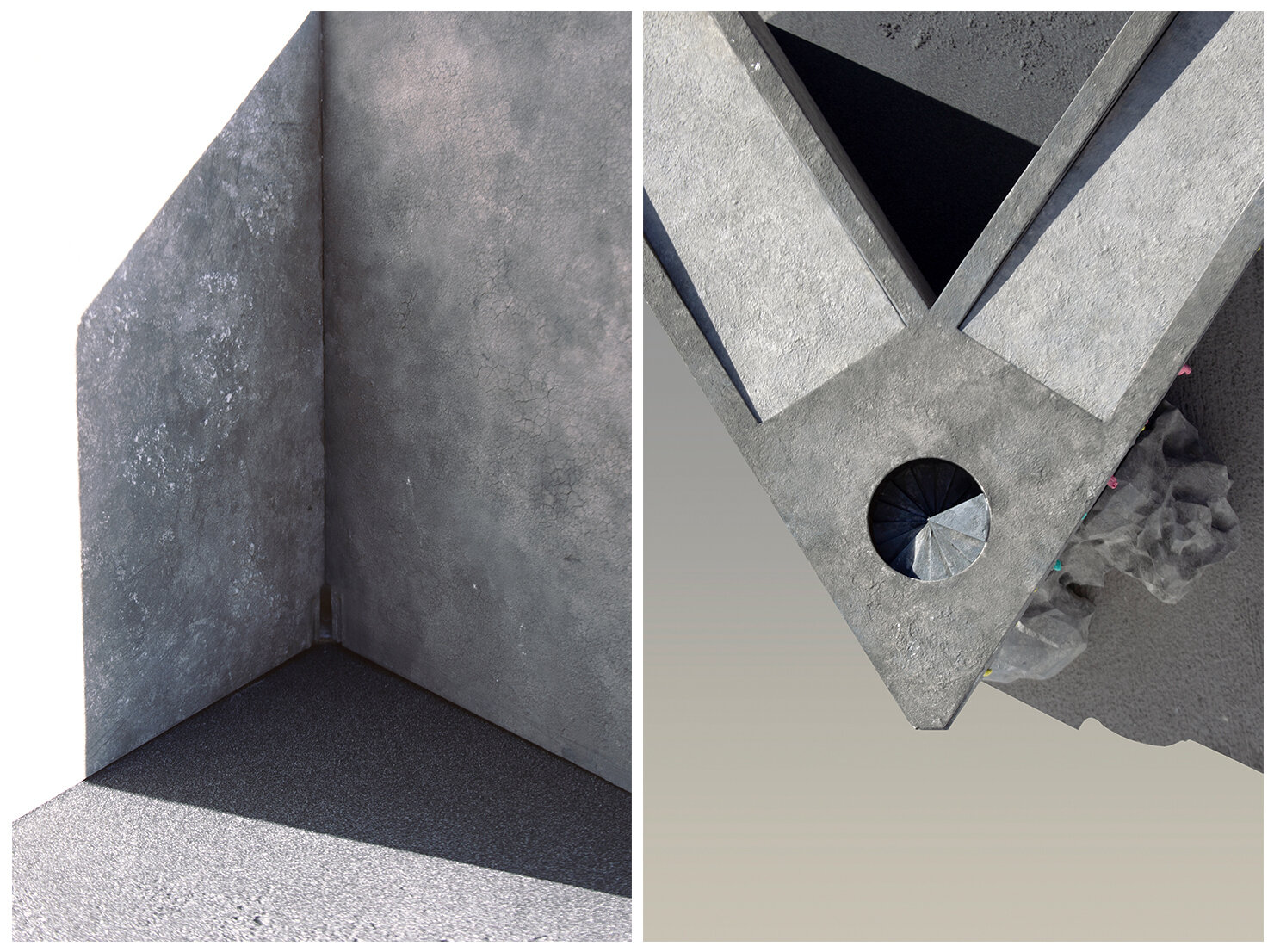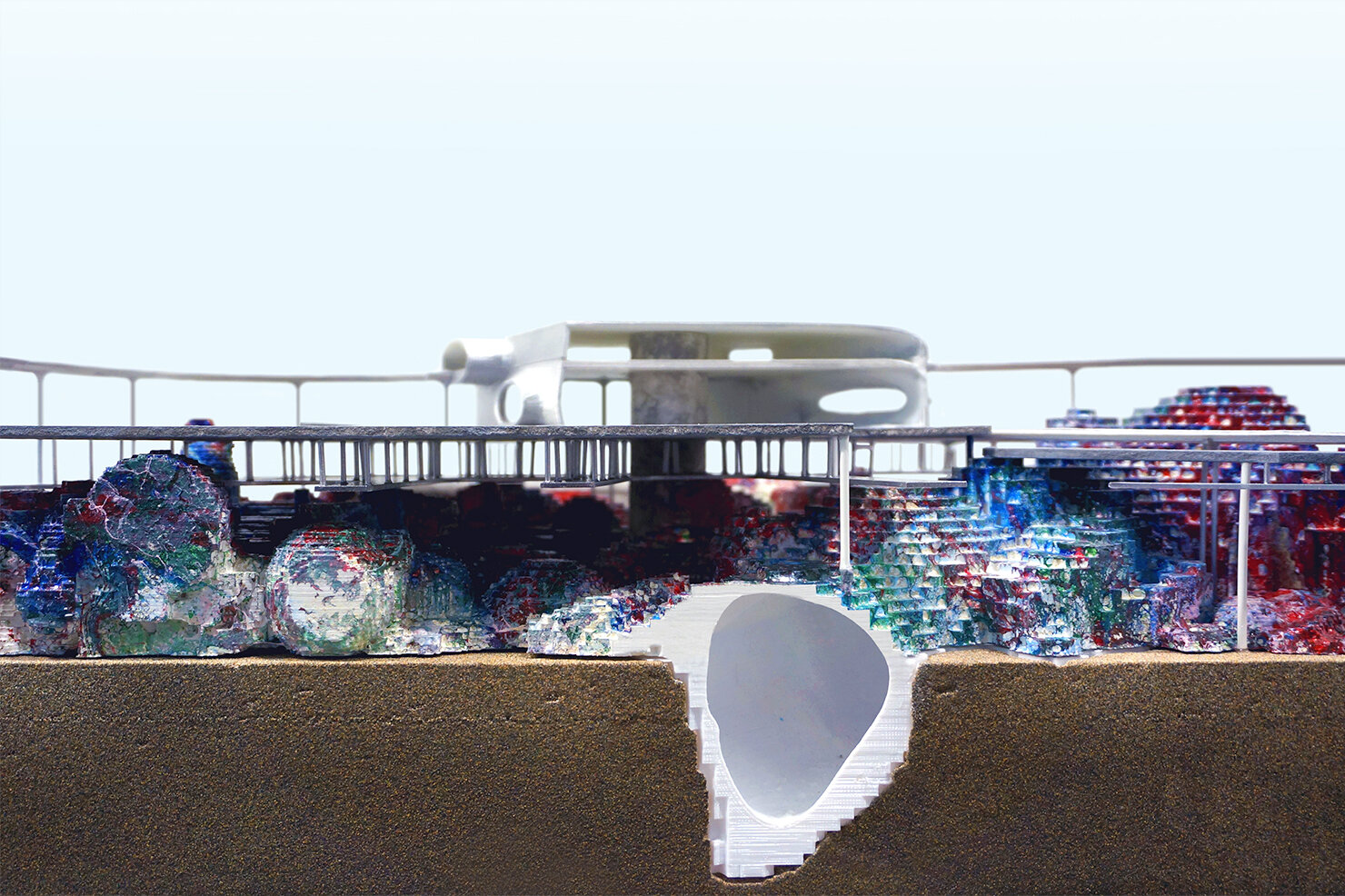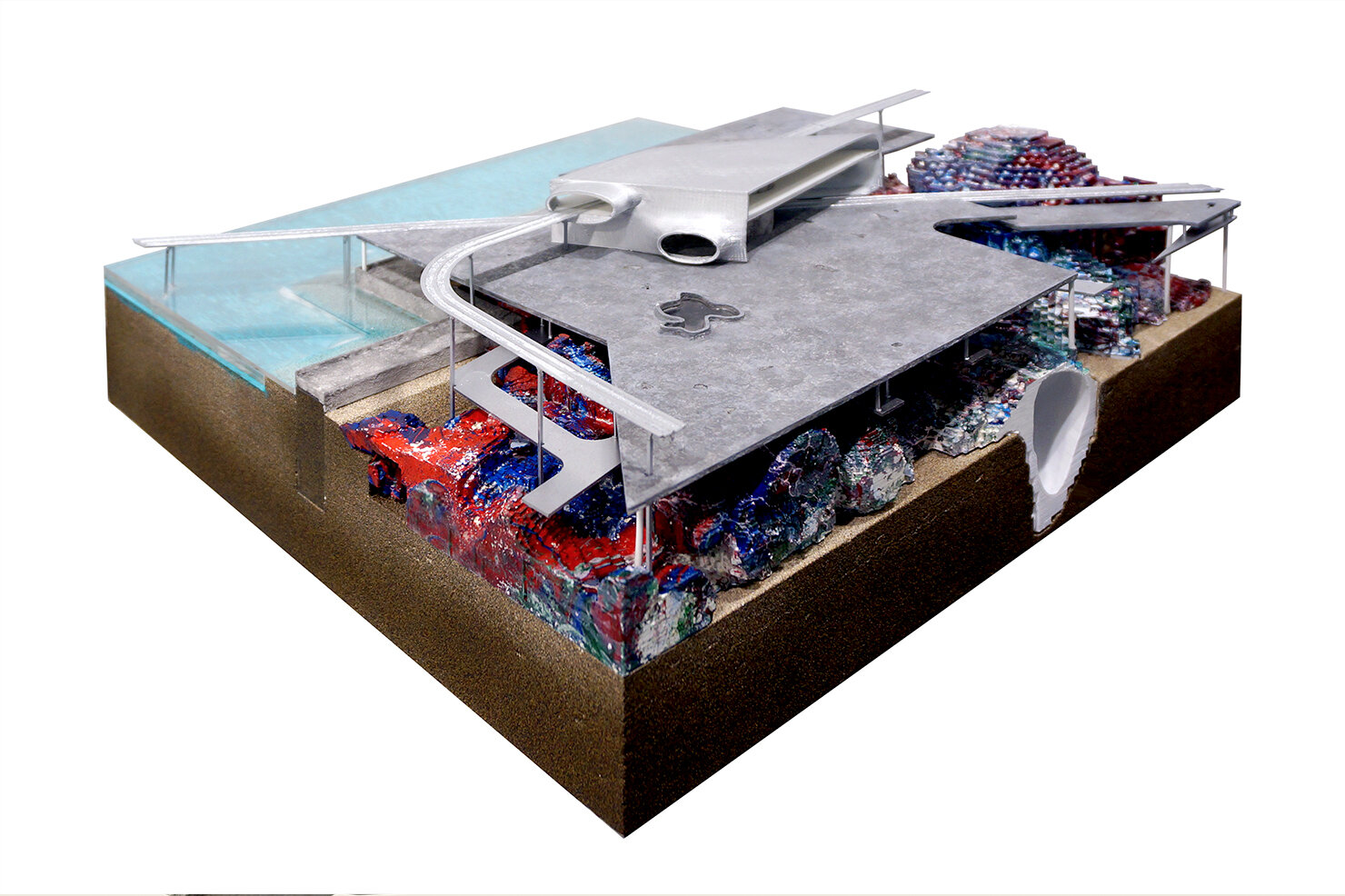SYNTHETIC LANDSCAPES
Vertical Studio, Winter Semester 2019 | SCI-Arc - Los Angeles
Instructor - David Ruy
Assistant Teacher - Subin Jameel
Final Jurors - Jessie Reiser, Toshiki Hirano, Darin Johnstone, Michael Osman, John Enright, and Anthony Morey
Project by Caleb Roberts; Diagram indicating the site planning strategy on Umino Mori Island as an assembly of Tokyo subway station silhouettes.
The studio required students to develop a multistage programmatic proposal at one of the venues of the 2020 Tokyo Summer Olympics, with an emphasis on the site after the Olympics are over. The class was interested in questioning and producing ideas of synthetic landscapes as the site for the games situated itself on a garbage landfill.
This site is an island about 5 miles off Tokyo bay, on reclaimed land called the Umino Mori landfill, which is also the site for the 2020 Summer Olympic games. Historically, Umino Mori island was a waste disposal site and is quite literally built on a foundation of garbage and detritus collected from all 23 wards of Tokyo, which is sandwiched in between layers of topsoil. The periphery of the island still continues to be a site for waste disposal and landfills, thereby constantly creating new real estate off Tokyo Bay.
Project by Nancy Ai and Rish Saito.
Project by Philip Hood, Agnes Wonhee Cho and Daniel Byeonguk. Super-surface architecture expressed as a multi-level infrastructural development combining transportation, habitation and waste management.
Project by James Chen, Siyu Zheng, Taian Wang and Na Chulwoon.
Project by Alex Hauptman, John Anase Shahid and Yipeng Liu.
